Words Amicia de Moubray Photographs Amicia de Moubray
St Lawrence, Otterden, is a somnolent relic of a vanished age. Just a few miles from Faversham, the hamlet of Otterden feels remote, even though as long ago as 1970 James Lees-Milne described it as ‘only just beyond the outskirts of metroland.’ One wonders what he would think today as Faversham expands its tentacles ever outwards.
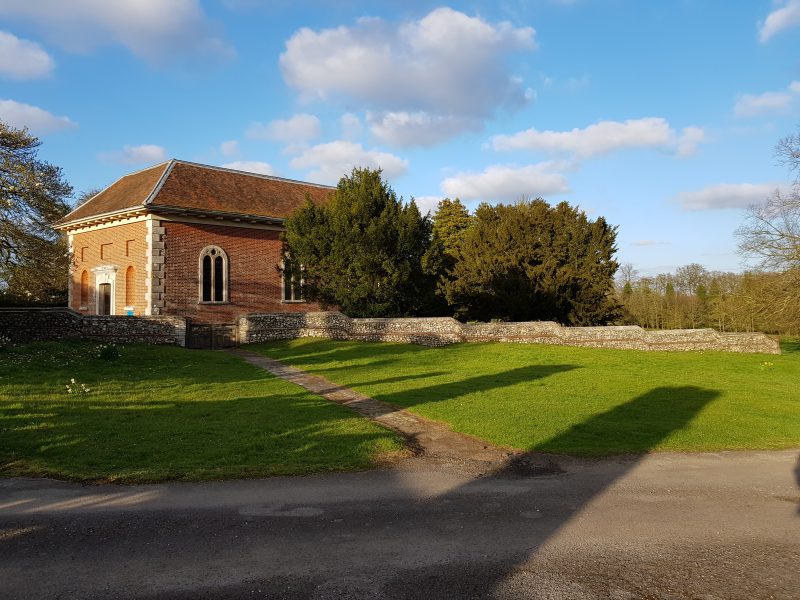
The Georgian church of St Lawrence, Otterden, near Faversham
Otterden Place, St Lawrence and a cluster of estate buildings, sit amidst an ancient park on the North Downs in countryside described by Edward Hasted in 1798: ‘Being greatly exposed to the NE [it is] very bleak and cold. The hills are very frequent and steep… The land is in general very poor and barren… The roads are very narrow and from the frequency and steepness of the hills and the quantities of loose flints in them, are very unpleasant and unsafe to travellers.’
It is a surprising place in which to discover a sophisticated Georgian church furnished with a remarkable set of Chinese Chippendale fretwork benches painstakingly painted to resemble wood graining.
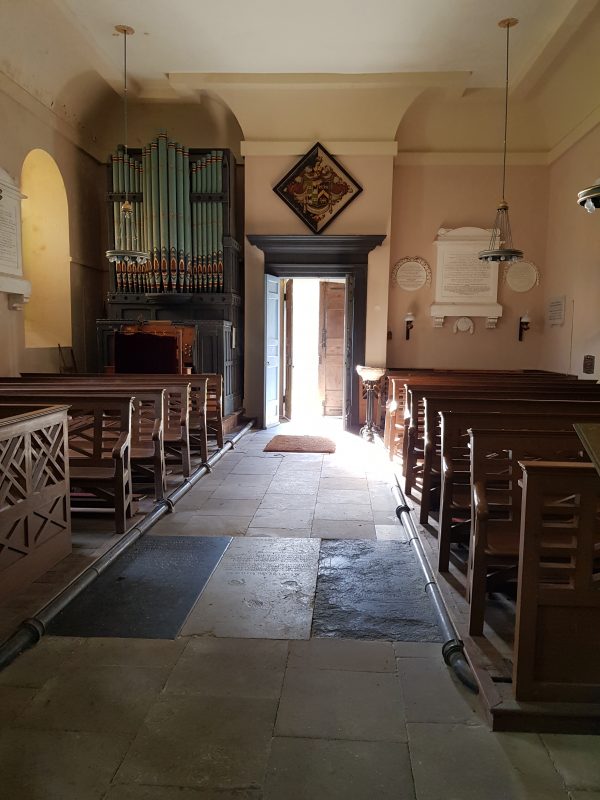
The interior of Otterden Church, near Faversham
There has been a church on the site since at least the 13th century. The earliest depiction of a church is in an estate map of 1664, showing a flint structure with a tower and a roof of thatch. Again we must turn to Hasted, writing in 1798 for a description of the old church : ‘Two small isles, and a chancel, without a steeple.’
The austere classical red brick church, built in 1753-4, described succinctly by Hasted as having ‘modern elegance’, on the footings of the medieval church, sits harmoniously next to the mansion. It is a compact box of a building, devoid of a tower ,with stone dressings and wide bracketed eaves. The handsome west doorway is flanked on either side by rubbed-brick niches. It is not known who designed it. Perhaps the Rev. Wheler had a hand in it’s design?
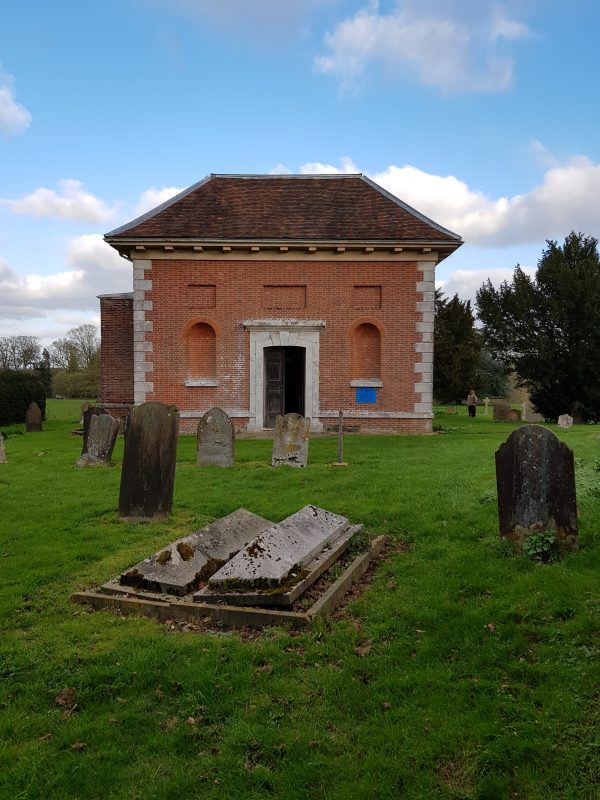
‘The modern elegance of the building takes away all appearance of its being a church’
The house dates in part from the early 16th century. An octagonal tower and fine brick chimney breast survive. It was extensively remodelled in an elegant romantically medieval style in the early 19th century. Interestingly, it is believed that the bricks for the house and probably the church were made on a site just below the present cricket ground, the roads being too hazardous to ferry bricks imported from Holland via Faversham Quay.
The Wheler family has been associated with Otterden since the early 18th century, when Thomas Wheler was contracted to marry Anne, the heiress daughter of Sir George Curteis of Otterden. It is uncertain whether the marriage ever took place, Thomas dying of smallpox in 1716. Anne sold Otterden to Thomas’s younger brother, the Rev Granville Wheler. The Rev Granville’s intriguing scientific experiments will be the subject of a future Faversham Life article.
Granville made an advantageous marriage to Lady Catherine Maria Hastings, daughter of Theophilus, 7th Earl of Huntingdon. Her elder half-sister, Lady Elizabeth Hastings, was frequently to be found at Otterden. She liked to hold prayers four times a day and read out a lengthy sermon to the tenantry every Sunday. The story goes that one winter when an epidemic prevented her from returning to her home in Yorkshire she had to endure a winter of services in Otterden church, which was then in a parlous state. No doubt it was her influence over her brother-in-law which led to his rebuilding the church in the latest fashion some ten years after her death in 1739. She is believed to have left £400 in her will towards the rebuilding.
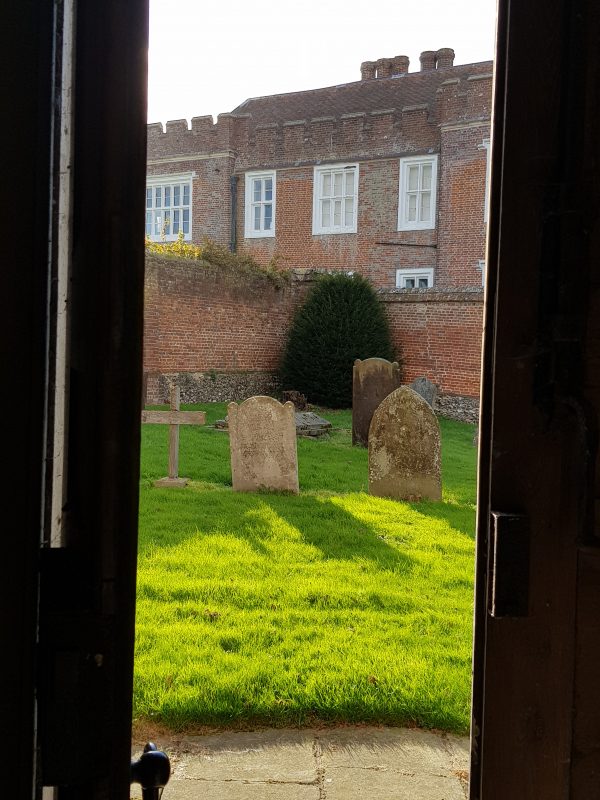
Looking out to Otterden Place from the church
Stepping into the church, one is immediately transported to a vanished squirearchical age. It is easy to imagine the incumbent Wheler patriarch presiding over his family, servants and tenantry. The 1851 census records that morning attendance was 39 and afternoon attendance 72. Happily, apart from the addition of the unobtrusive chancel in the 1890s the church escaped Victorian ‘improvements’.
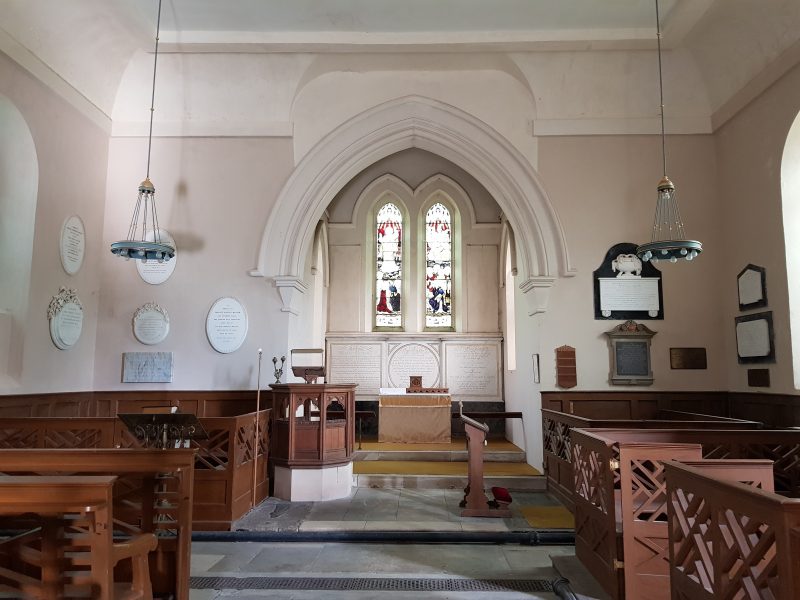
A fine interior not too marred by the modest Victorian addition of the chancel.
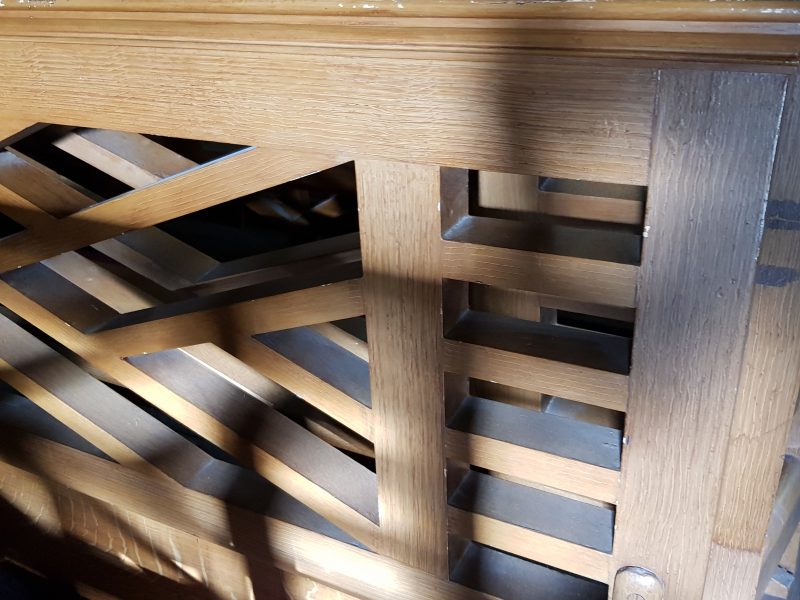
A detail showing the superbly painted wood grained Chinese Chippendale benches,
There is much to delight, from the benches to the marvellous 16th century monuments to the Lewins and Curteises, previous owners of Otterden. These are almost certainly the work of Epiphanius Evesham and were moved from the previous church to the recess in the north wall. The monument to Sir Justinian Lewin is particularly beguiling. Wearing armour beautifully decorated with golden arabesques, he lies recumbent while his wife kneels at this side looking on him forlornly. Their daughter kneels in front of her mother looking very distressed.
The elegant rectory stands about half a mile distant to the church.
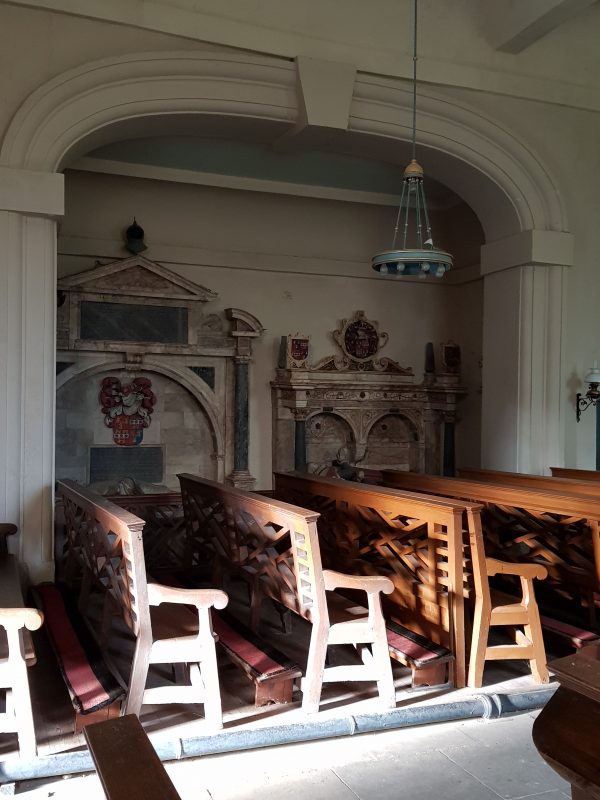
Two superb monuments, probably by Epiphanius Evesham from the previous church at Otterden
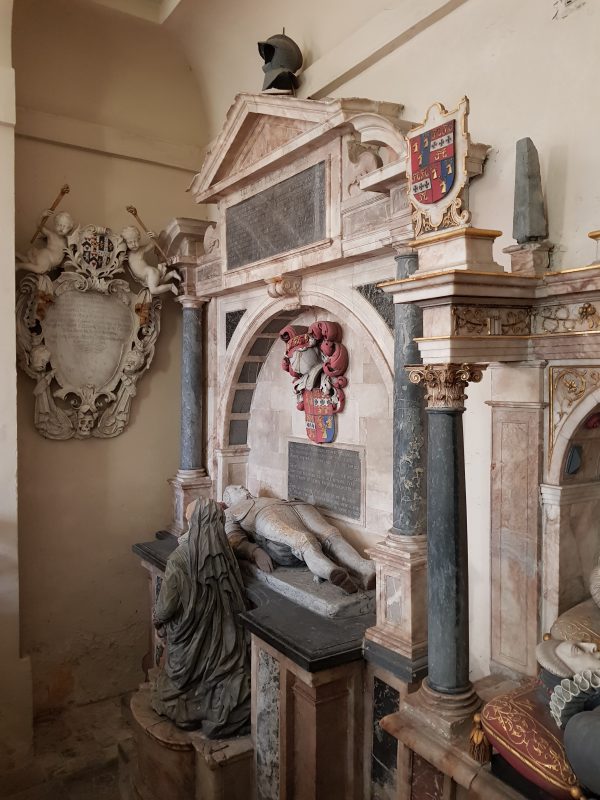
The grieving widow of Sir Justinian Lewin prays beside him c1620
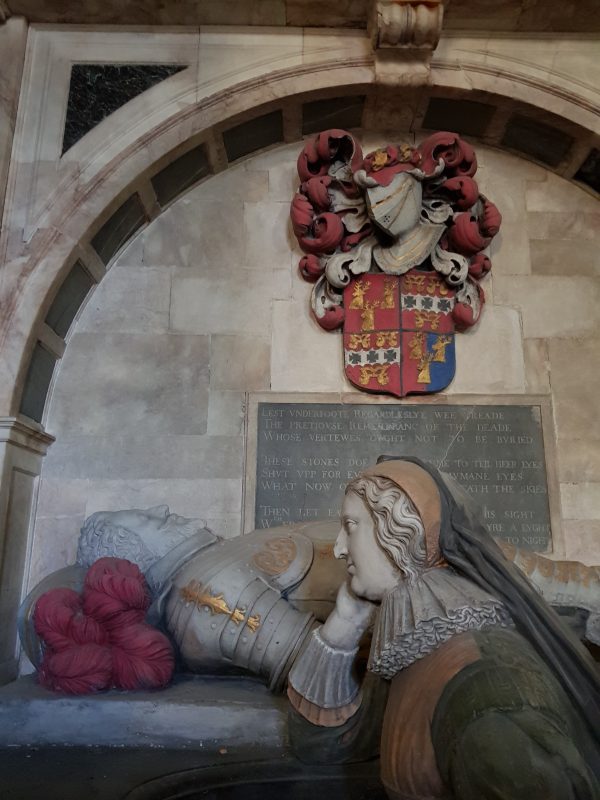
Sir Justinian Lewin and his lady wife
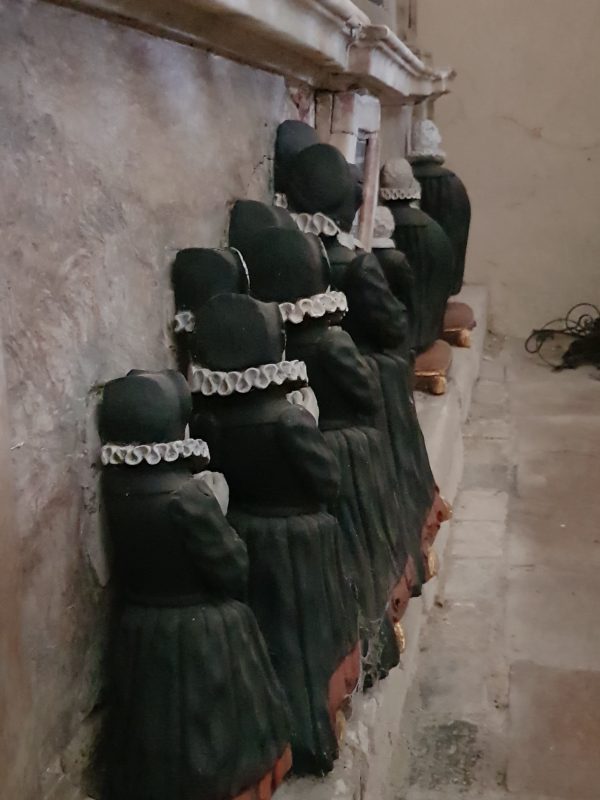
The daughters of William Lewin beneath his tomb almost certainly by Epiphanius Evesham
Other items of note are a small marble bowl font supported on a wrought iron stem, ‘the latest thing in the 1750s, no doubt,’ according to Pevsner.
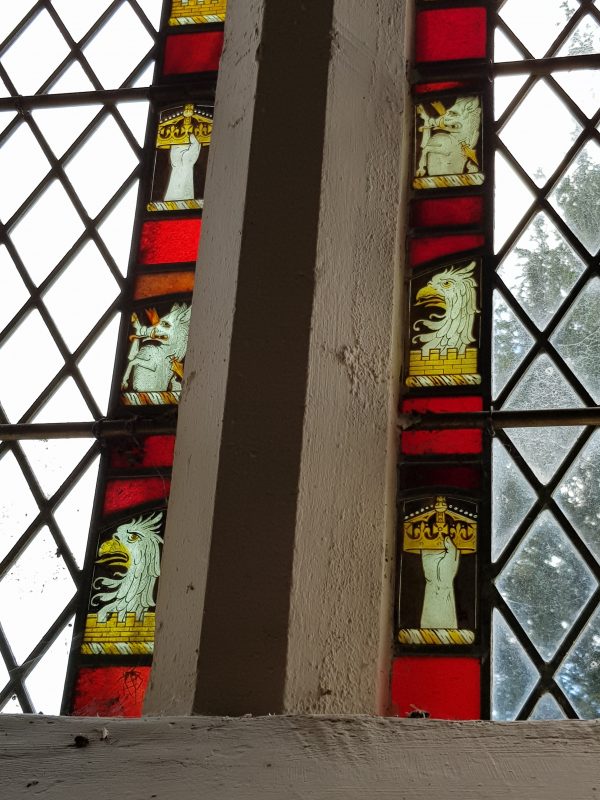
Attractive heraldic stained glass
There are several good 15th and 16th century brasses and an extremely fine stained glass window by the Irish Arts and Crafts artist Wilhelmina Geddes dated 1933, depicting Joseph of Arimathea.
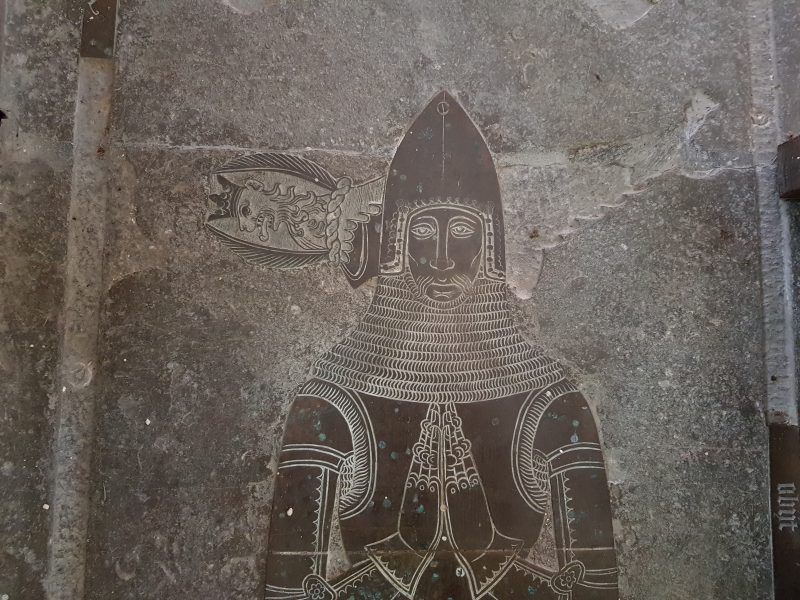
Brass of Thomas Seintlegier 1408
Sadly, regular services have long since stopped. If you are interested in visiting St Lawrence please write to David Merrifield, Otterden Place, Kent ME13 0DB.
Text: Amicia. Photographs: Amicia